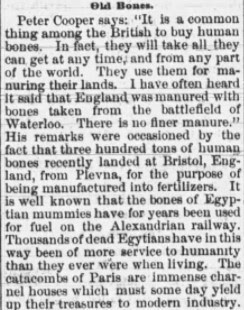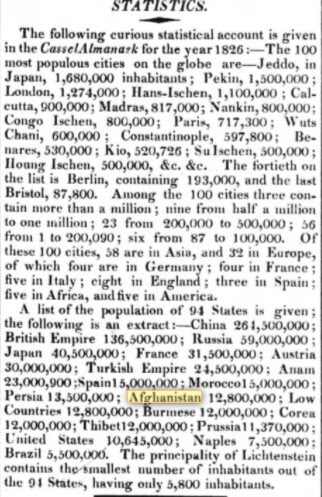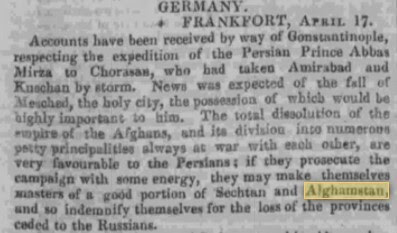04 Sep Discover my family tree- Newsletter- September 4, 2021
 OLD BONES FOR FERTILIZER?
OLD BONES FOR FERTILIZER?
In the 1700’s Europe’s fields were becoming exhausted.
The solution became to use the bones of dead soldiers amongst others to fertilize the fields.
Fortunately, a replacement fertilizer was found in the Chincha Islands off of Peru in the form of Guano, 150 feet deep.
In November 1802, Prussian geographer and explorer Alexander von Humboldt first encountered guano and began investigating its fertilizing properties at Callao in Peru, and his subsequent writings on this topic made the subject well known in Europe.
As many as 160 ships at a time were anchored off the islands while the “hard to recruit” guano miners labored away.
The heyday of the Guano fertilizer industry was 1802 to 1884.
AFGHANISTAN HAS HAD SHIFTING SANDS FOR A LONG TIME
In 1826, Afghanistan had two million more people than the US, 11th overall in size. Today it has 32 million and is 43rd ranked.
In 1832, you can read about the country being divided into numerous petty principalities.
During the First World War, when Afghanistan was neutral, the ruler Habibullah Khan was met by officials of the Central Powers (Germany, Austria Hungary, etc.) to declare full independence from the United Kingdom, join them and attack British India as part of the Hindu–German Conspiracy. Their efforts to bring Afghanistan into the Central Powers failed, but it caused discontent among the population for keeping neutrality against the British.
Before and during WW2, Afghanistan built close relationships with the Axis powers, with Nazi Germany having the largest share in Afghan development, along with the Kingdom of Italy and the Empire of Japan.





